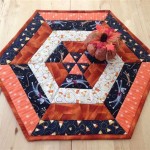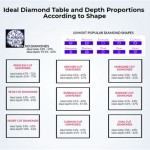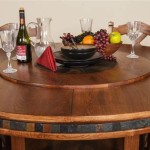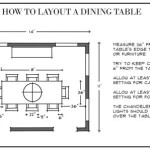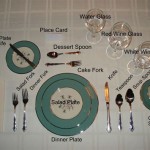Determining the Ideal Square Overlay Size for a 72-Inch Round Table Top
Selecting the appropriate overlay for a round table significantly influences both the aesthetic appeal and practical functionality of the table setting. When dealing with a 72-inch round table, choosing a square overlay requires careful consideration of several factors to achieve the desired look and drape. This article provides a comprehensive guide to determining the ideal size for a square overlay for a 72-inch round table top, exploring various design considerations and offering practical advice for making informed decisions.
The term "overlay," in this context, refers to a smaller tablecloth placed atop a larger, base tablecloth. Overlays are frequently used to add visual interest, texture, or color to a table setting, often reflecting the theme or occasion. They also provide an additional layer of protection for the base tablecloth. While round overlays are a common choice for round tables, square overlays offer a contrasting shape that can create a more dynamic and contemporary look.
The primary consideration when selecting the size of a square overlay is the desired drape. A short drape will expose more of the base tablecloth, creating a layered effect, while a longer drape will provide a more substantial and formal appearance. Understanding these visual effects is crucial for selecting the most appropriate overlay size for a given event or decor style.
Understanding Drape and Its Impact on Aesthetics
Drape refers to the amount of fabric that hangs over the edge of the table. When using a square overlay on a round table, the drape will vary depending on the placement of the square's corners relative to the round table's edge. The longest drape will occur at the corners of the square, while the shortest drape will occur at the midpoints of the square's sides. This differential drape is a key characteristic of this design choice.
A minimal drape, typically ranging from 6 to 12 inches, provides a subtle accent to the base tablecloth. This shorter drape is suitable for casual events or when the base tablecloth is particularly attractive and the aim is to highlight its features. A minimal drape can also be more practical in situations where there is limited space around the table, as it reduces the risk of guests tripping over the fabric.
A moderate drape, ranging from 15 to 24 inches, offers a more balanced look, providing a significant visual impact without completely obscuring the base tablecloth. This drape length is a versatile choice suitable for a wide range of events, from semi-formal dinners to corporate gatherings. The moderate drape adds a touch of elegance and sophistication while still allowing the base tablecloth to contribute to the overall aesthetic.
A full drape, extending 27 inches or more, creates a formal and luxurious ambiance. This longer drape is ideal for weddings, galas, and other special occasions where a grand and elegant atmosphere is desired. A full drape can completely transform the look of the table, creating a dramatic and visually stunning effect. However, it is important to ensure that there is sufficient space around the table to accommodate the longer drape and prevent it from becoming a hindrance to guests.
The choice of drape length should also consider the height of the table. Standard table height is typically around 30 inches. When calculating the overlay size, it's critical to account for this height to ensure the drape falls appropriately. A longer drape might be unsuitable for shorter tables, as it may extend too close to the floor and create an unappealing appearance.
Calculating the Optimal Square Overlay Size
To determine the optimal size of a square overlay for a 72-inch round table, several calculations are required. The diameter of the table, which is 72 inches in this case, serves as the starting point. The desired drape length is then added to the diameter to calculate the minimum side length of the square overlay.
Let's consider an example where a 12-inch drape is desired. The calculation would be as follows: 72 inches (table diameter) + 12 inches (drape on one side) + 12 inches (drape on the opposite side) = 96 inches. Therefore, a 96-inch square overlay would provide a 12-inch drape.
However, it's crucial to recognize that this calculation provides the *minimum* size for the square. The drape will be 12 inches only at the midpoints of the sides of the square. The drape at the corners will be significantly longer. To calculate the drape at the corners, one needs to visualize the square positioned over the circle. The corner of the square will extend further than the midpoint of the side from the center of the circle. This increased distance is the reason for longer corner drapes.
For a more accurate understanding, geometric principles can be applied. Imagine a square with sides tangent to the circle's edges (midpoint of the square's sides touching the edge of the round table). This represents the *minimum* square size that fully covers the table *without any drape*. To achieve a drape, the square needs to be larger. The distance from the center of the round table to the corner of this minimum square can be calculated using the Pythagorean theorem or trigonometric functions. However, for practical purposes and to avoid overly complex calculations, a simpler method can be used.
A practical approach involves adding a buffer to the initial calculation. Instead of simply adding the desired drape length multiplied by two to the diameter, consider adding an additional 6 to 12 inches. This buffer will ensure that the corners of the square have a more substantial drape, creating a balanced and visually appealing effect.
Therefore, for a 72-inch round table and a desired 12-inch drape, instead of opting for a 96-inch square (72 + 12 + 12), consider a 102-inch to 108-inch square. This will provide a more pronounced drape at the corners while still achieving the desired 12-inch drape at the sides.
It is always advisable to err on the side of caution and choose a slightly larger overlay rather than a smaller one. A larger overlay can always be adjusted or styled to achieve the desired look, while a smaller overlay will inevitably appear inadequate.
Material Considerations and Styling Tips
The choice of fabric for the square overlay significantly impacts its appearance and drape. Different fabrics have varying weights, textures, and levels of stiffness, all of which influence how the fabric hangs and falls. Heavier fabrics, such as damask or brocade, tend to have a more structured drape, while lighter fabrics, such as linen or chiffon, create a softer and more flowing effect.
When selecting a fabric, consider the overall style of the event and the desired aesthetic. For formal occasions, luxurious fabrics with a subtle sheen, such as satin or velvet, are excellent choices. For more casual events, natural fabrics like linen or cotton provide a relaxed and inviting feel.
The color and pattern of the overlay should complement the base tablecloth and the overall color scheme of the event. A contrasting color can create a bold and dynamic look, while a complementary color will provide a more harmonious and understated effect. Patterned overlays can add visual interest and texture to the table setting, but it is important to ensure that the pattern does not clash with the base tablecloth or other decorative elements.
Styling the square overlay on a round table involves careful attention to placement. The overlay can be centered directly over the table, creating a symmetrical and balanced look. Alternatively, the overlay can be rotated slightly to create a more dynamic and asymmetrical effect. Experiment with different angles to find the most visually appealing arrangement.
Consider adding decorative elements to enhance the overall look of the table setting. Centerpieces, candles, and floral arrangements can all be used to complement the square overlay and create a cohesive and visually stunning display. Napkins, place cards, and other tabletop accessories can also be chosen to coordinate with the overlay and enhance the overall aesthetic.
Finally, it is essential to ensure that the square overlay is properly ironed or steamed before use. Wrinkles and creases can detract from the overall appearance of the table setting and create an unprofessional impression. A well-pressed overlay will drape beautifully and contribute to a polished and sophisticated look.
By carefully considering the desired drape length, performing accurate calculations, selecting appropriate fabrics, and paying attention to styling details, one can confidently choose the ideal square overlay size for a 72-inch round table, transforming any event into a visually stunning and memorable occasion.

Table Linen Overlay Size Chart For 5 6 Round Tables Collective Event Group

Table Overlay Sizing Guide

Table Overlays Sizing Guide Balsa Circle Blog Balsacircle Com

Table Overlays Sizing Guide Balsa Circle Blog Balsacircle Com

Table Overlay Size Chart For Round Tables Cv Linens

How To Choose The Right Table Overlay Size For Your Wedding

Cv Linens Square 72 Satin Table Overlay Red

Common Round Table Overlay Sizing Combinations

72 X Overlay Barrons

How To Choose The Right Table Overlay Size For Your Wedding
Related Posts


